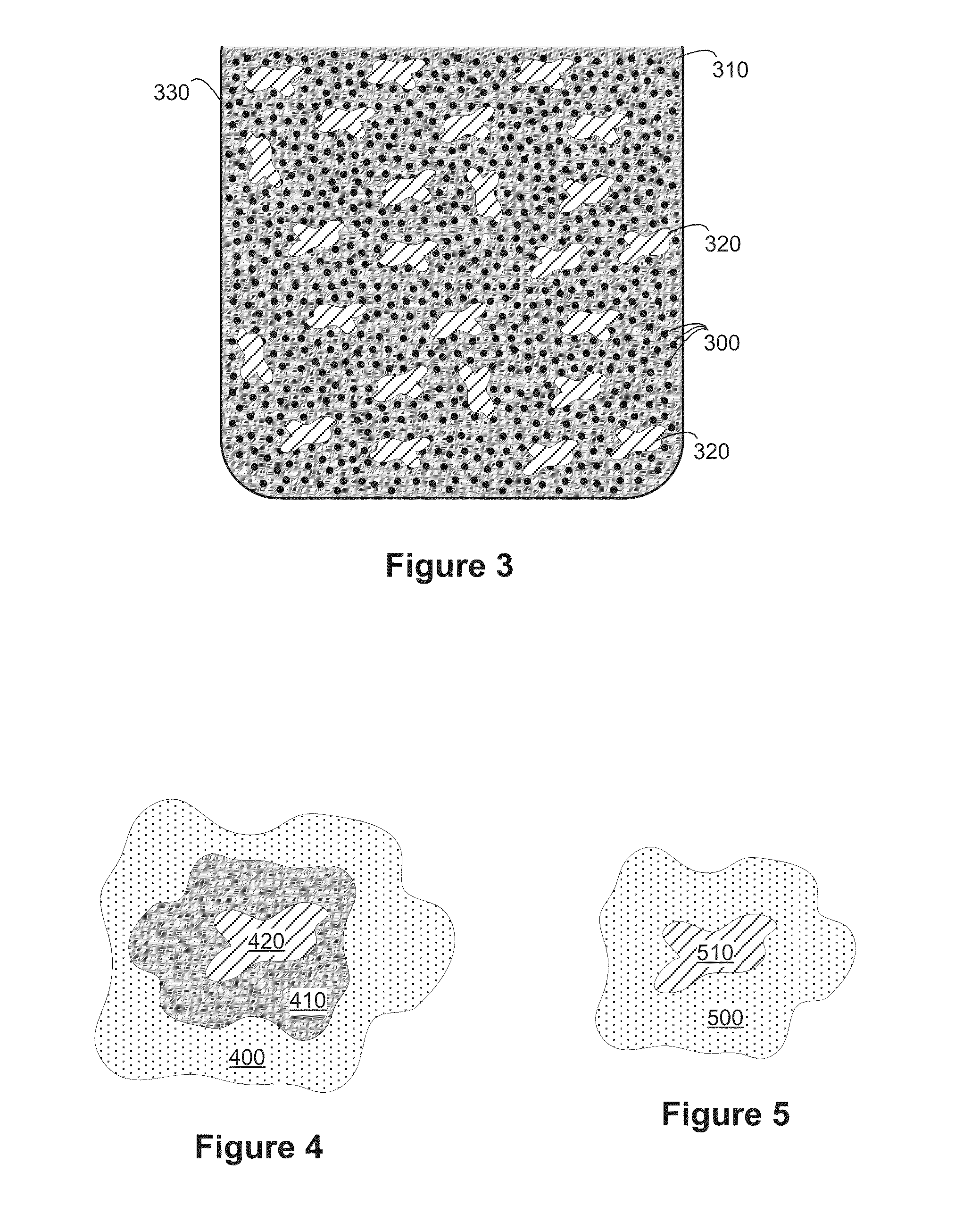Method of enhancing palatability of a dietary supplement to animal food
a dietary supplement and animal food technology, applied in the field of liquid dietary supplement for animals, can solve the problems of difficult delivery of prozyme® to the animal, adverse effects on the acceptance of fish oil products by consumers, messy dispensing, etc., to facilitate the delivery of fish oil, increase the willingness of the animal to ingest, and enhance the ingestion of omega-3.
- Summary
- Abstract
- Description
- Claims
- Application Information
AI Technical Summary
Benefits of technology
Problems solved by technology
Method used
Image
Examples
example 1
[0026]The following example is based on a 32 oz (or 907,185 mg) sample preparation. A Porta-Shell® laboratory blender with intensifier bar available from Patterson Industries, LTD of Toronto, Ontario was used to mix about 513 mg of a bacillus subtilis probiotic dietary supplement, Subactil™, and about 1,429 mg of an alpha-amylase digestive enzyme dietary supplement, Multifect AA 1200P Alpha Amylase. The probiotics and digestive enzymes in dry powder form were mixed to form a well-dispersed probiotic and digestive enzyme mixture. The probiotic and digestive enzyme mixture was then introduced into a 4400tx-115v Rotary Shuttle Powder Filler system available from Kinematics & Controls Corporation of Brooksville, Fla. The shuttle dosing machine measured a prescribed amount of the probiotic and digestive enzyme mixture and dropped the prescribed amount (1,942 mg) of the combined mixture into a dosage bottle. A series APD-6 Automatic Positive Displacement Filling Machine available from Acc...
example 2
[0061]A blender was used to mix about 834,610 mg of salmon fish oil and about 72,575 mg of a silica thickening agent, Sipernat® 22LS. The salmon oil was prepared by Trident Seafoods in a commercial fish oil recovery system. The silica thickening agent was in a dry powdered form. The fish oil and silica thickening agent were blended for about 5 minutes at a high-speed setting of the blender to yield thickened fish oil having a viscosity of similar to that of liquid hand soap (e.g., about 114,000 cP at about 19° C.). The viscosity was measured using a Brookfield viscometer model RV-1 DV-I Prime, with a #03 spindle at 5 rpm. The measured percentage torque on the viscometer was 51.6%. The resulting thickened fish oil was placed in delivery system (e.g., delivery system 600 of FIGS. 6 and 7) and dispensed onto a flat plate. The thickened fish oil was not runny and did not drip from the fluid outlet after being dispensed.
[0062]Two iterations of applying pumping force to a pump dispenser d...
example 3
[0063]A Waring Blender was used to mix about 625,958 mg of salmon fish oil, about 156,489 mg of a silica thickening agent, Sipernat® 22LS, about 56,699 mg of glucosamine, about 11,340 mg of chondroitin, and about 56,699 mg of MSM. The salmon fish oil was prepared from salmon as described in Example 2. The silica thickening agent and the added dietary supplements were in a dry powdered form. The fish oil, silica thickening agent, and added dietary supplements were blended for about 2 minutes at the high speed setting of the blender to yield a homogeneous thickened fish oil with the added dietary supplements suspended therein and having a consistency similar to that of a thick grease. The mixture was too thick to test using a Brookfield viscometer model RV-1 DV-I Prime.
PUM
 Login to View More
Login to View More Abstract
Description
Claims
Application Information
 Login to View More
Login to View More - R&D
- Intellectual Property
- Life Sciences
- Materials
- Tech Scout
- Unparalleled Data Quality
- Higher Quality Content
- 60% Fewer Hallucinations
Browse by: Latest US Patents, China's latest patents, Technical Efficacy Thesaurus, Application Domain, Technology Topic, Popular Technical Reports.
© 2025 PatSnap. All rights reserved.Legal|Privacy policy|Modern Slavery Act Transparency Statement|Sitemap|About US| Contact US: help@patsnap.com



